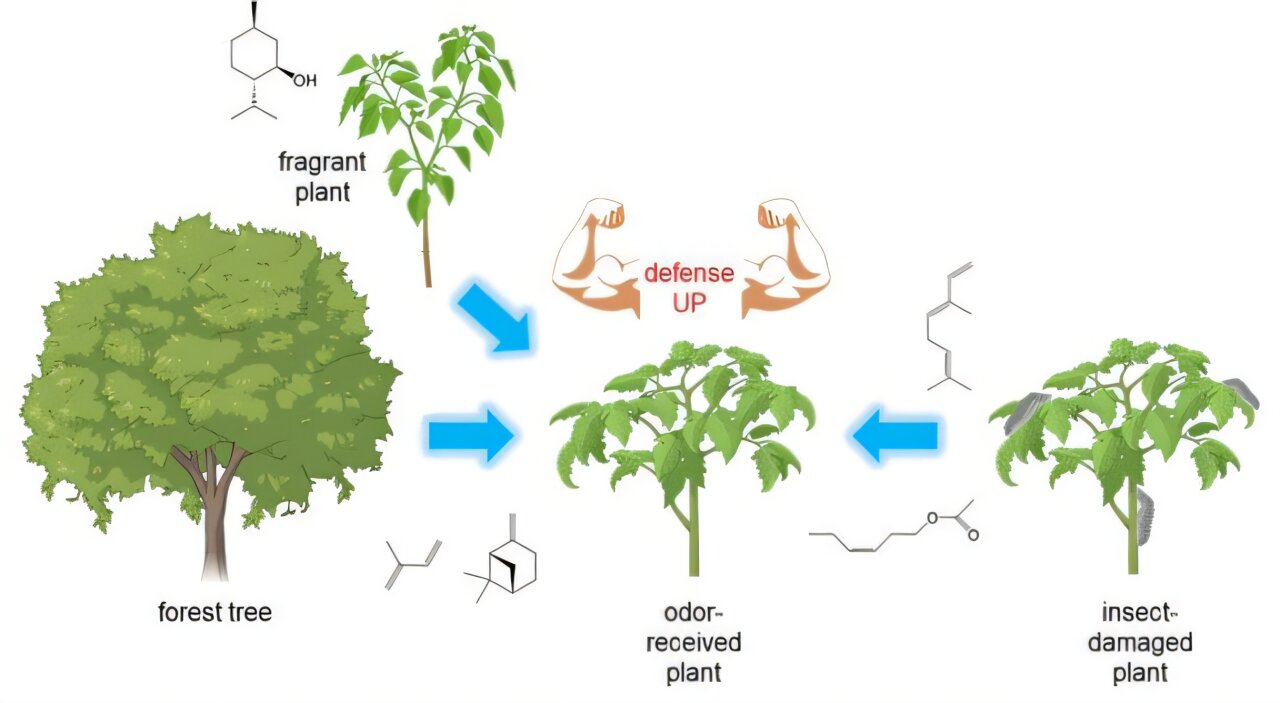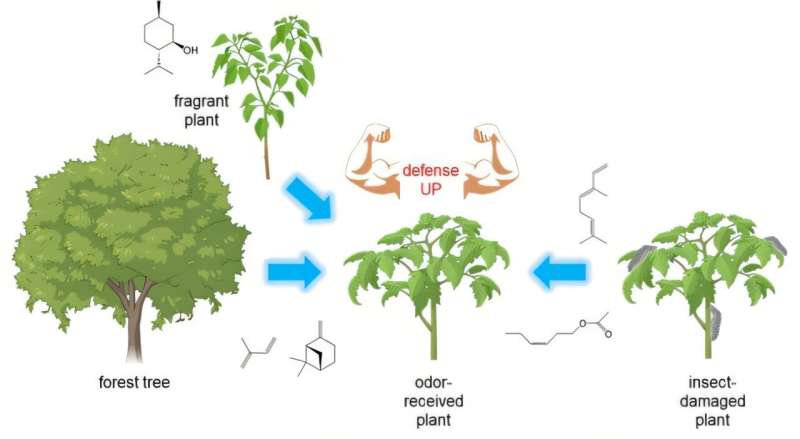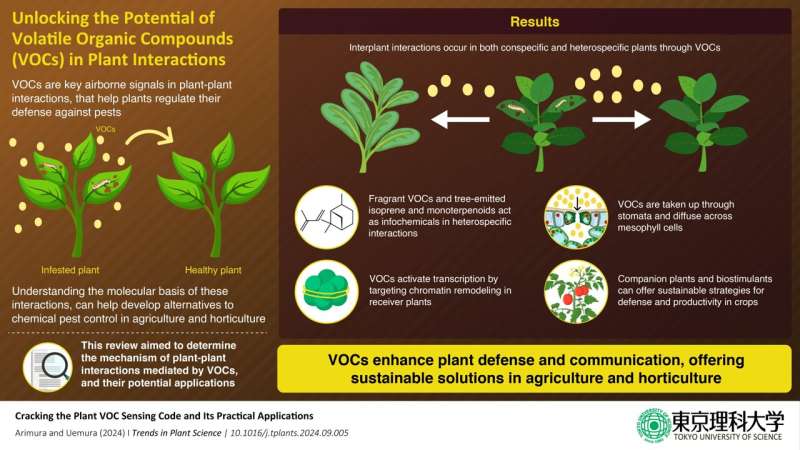

Volatile organic compounds (VOCs) are essential airborne signals or odors that enable plants to communicate with other organisms and plants across short and long distances. A key aspect of this communication occurs when a plant is damaged by herbivorous pests, triggering the release of VOCs.
These compounds can be detected by neighboring plants, prompting them to enhance their defenses against potential threats. This complex biochemical strategy enables plants to protect themselves effectively from various stresses.
This field of study has recently garnered significant interest due to its promising applications in agriculture. In this vein, Professor Gen-ichiro Arimura and his colleague Mr. Takuya Uemura from Tokyo University of Science, Japan, set out to explore the molecular pathways behind this communication and its potential applications in sustainable agriculture.
Their review published online on October 11, 2024 in Trends in Plant Science, sheds light on these intricate processes and their implications for agricultural advancement. The study explored how understanding plant-to-plant communication could lead to innovative strategies for crop protection and yield improvement, potentially revolutionizing sustainable agriculture.
“While plants don’t possess a sophisticated olfactory system like animals, they are able to detect and react to a wide range of VOCs based on structural similarities to compounds they or their ancestors encountered during beneficial or harmful interactions with various organisms,” explains Prof. Arimura.
Plants emit various types of VOCs when under attack, such as isoprene, terpenoids, and green leaf volatiles. These compounds have long been recognized for their role in signaling across species, attracting beneficial insects, or repelling herbivores.
Notably, monoterpenoids, which are abundant in mint plants, have been commercialized for their pest-repelling, antimicrobial, and ovicidal properties. This study revealed that these plant-plant interactions are not limited to related plants but can also occur between non-kin plants.

Once emitted, VOCs are absorbed through the stomata and diffuse across the mesophyll cells of neighboring plants. The plant’s response involves intricate intracellular and intercellular signaling mechanisms. For instance, calcium fluxes play a key role in signaling cascades.
In the VOC-receiving plants, hydrocarbons like β-caryophyllene can regulate gene expression by interacting with the chromatin, a structure that controls DNA accessibility. This process, known as chromatin remodeling, triggers the activation of gene transcription, thereby preparing the plant for enhanced defense responses.
Currently, chemical pesticides are widely used to protect crops, but their harmful environmental impact, coupled with the rising demand for higher food productivity, underscores the need for safer alternatives. The use of VOCs offers a sustainable solution, promoting both crop defense and productivity while reducing reliance on pesticides and other harmful chemicals.
Additionally, this novel approach will reduce the cost of production and increase the value of produce, as the majority of consumers prefer ‘pesticide-free crops’ for their overall well-being.
“One promising approach is the incorporation of companion plants like potted mint, candy mint, and pepper mint, that consistently emit beneficial VOCs. Additionally, developing biostimulants—substances that boost plant growth and stress tolerance—could further enhance interplant interactions,” claims Prof. Arimura. He further adds that commercial products based on their novel findings will soon be available for use in agriculture.
However, the practical implementation of VOC-based technologies in agriculture faces several challenges, such as dose-dependent responses, inappropriate distances between plants and high concentrations of VOCs (allelochemicals), that may potentially inhibit the growth of neighboring plants.
This review paves the way for further exploration of VOCs in agricultural contexts, urging the scientific community to collaborate with farmers and policymakers to harness the power of plant communication. By leveraging the natural signaling mechanisms of plants, sustainable farming practices can be developed that not only improve crop productivity but also promote environmental health.
More information:
Gen-ichiro Arimura et al, Cracking the plant VOC sensing code and its practical applications, Trends in Plant Science (2024). DOI: 10.1016/j.tplants.2024.09.005
Provided by
Tokyo University of Science
Citation:
How volatile organic compounds enhance plant defense and offer sustainable pest control solutions (2024, October 24)
retrieved 24 October 2024
from https://phys.org/news/2024-10-volatile-compounds-defense-sustainable-pest.html
This document is subject to copyright. Apart from any fair dealing for the purpose of private study or research, no
part may be reproduced without the written permission. The content is provided for information purposes only.